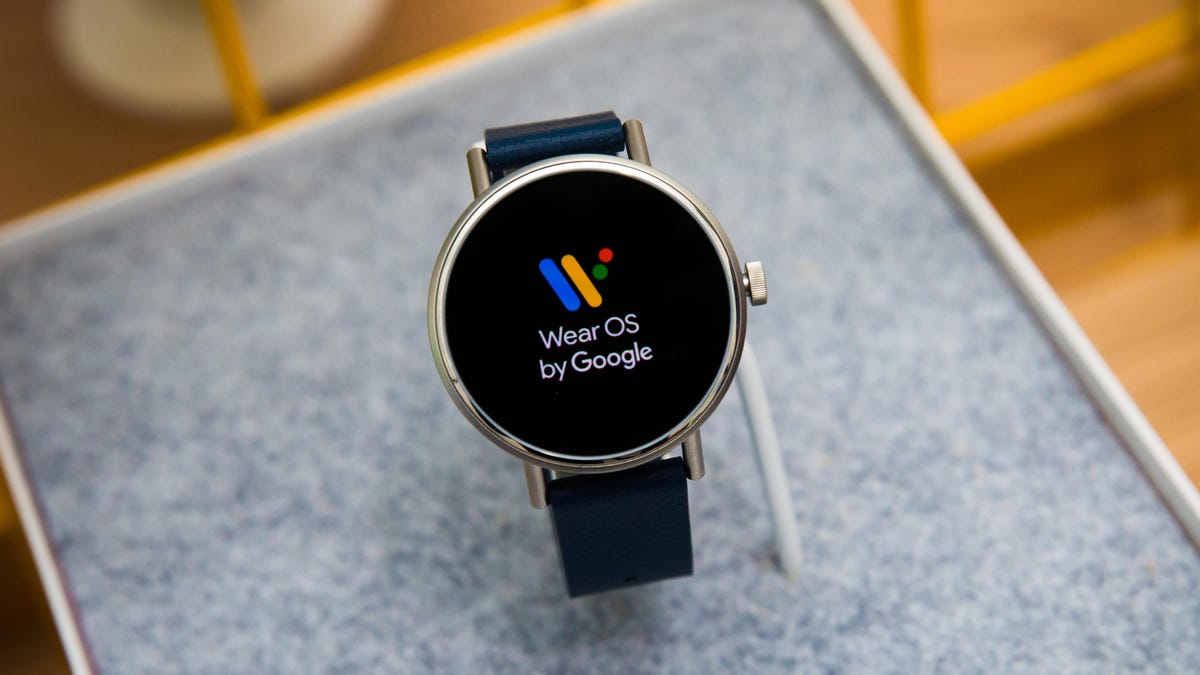Can Google and Samsung's Wear OS take on the Apple Watch? It's complicated
Commentary: Wear OS has its time to shine, thanks to Google's new partnership with Samsung and Fitbit. Will Android watches finally become viable competitors to the Apple Watch?

Google had big ambitions with its wearable software, Wear OS . But for the past few years, it's stagnated and Apple has taken an even bigger lead in the global smartwatch market. A new partnership with Samsung announced on Tuesday at Google I/O could give Wear OS the attention it needs to stay relevant. But it won't catch up to Apple unless it seriously addresses some of the biggest issues that have plagued its smartwatches over the past few years.
Here are the things Google's new Wear OS needs to do to be a viable competitor to the Apple Watch .
Battery life that lasts longer than a day
The first major complaint about Wear OS from most users is battery life. While it depends on the specific watch, its processor and usage patterns, some of the Wear OS watches I've worn have struggled to get me from breakfast to dinner. Add a resource-intensive task like a GPS workout and it's not unusual to see your battery life drop even further. You shouldn't have to turn off features or nix notifications just to get through the day.
While Google hasn't provided any specific numbers for its next-generation watches beyond a general "better battery life" spec, at least it's on the radar. The Apple Watch Series 6 can last almost two days with raise-to-wake enabled instead of the always-on display, so the benchmark isn't particularly high.
See also
Snappy performance and Google apps that work as intended
Wear OS watches, on the whole, have been pretty slow. Even basic smartwatch tasks like scrolling through menus or raise-to-wake can take ages. There are exceptions: The Ticwatch Pro 3 addresses some of these performance issues as it's running Qualcomm's latest chip, the 4100 Plus. But if you've used a Wear OS watch in the past, you'll know what I'm talking about.
Samsung's current watches use its own Exynos processors. While we don't yet know what chipset the new Wear OS watches will use, it makes sense to leverage the power of what Exynos can already do when it comes to cellular connectivity and performance.
Then there's the question of Google apps. One of Google's biggest strengths on the Android side is the power of its Assistant. But when it comes to Wear OS, it misses the mark. It took months for the "OK Google" wake phrase to get fixed when users reported it stopped working, and even basic tasks, like using the Assistant to send a text message, can be hit and miss. Thankfully, it looks like we'll finally be getting offline YouTube Music support and be able to use Google Maps without a phone, but a lot of this feels like catch-up for features we should have had years ago.
Health and fitness tracking that stands out
Most Wear OS watches don't really focus on health features. Wear OS can do the standard stuff like track basic workouts and calories burned with Google Fit. But third-party apps have had to fill in a lot of the gaps for people looking for more of a fitness focus, like specific training programs.
Apple's health and fitness tracking is incredibly strong, not only because of its intuitive system of rings and workout programs like Fitness Plus, but also because of potentially life-saving features like fall detection on the Apple Watch.
Fitbit, now a part of Google, has really strong sleep and fitness tracking, as well as a great social component for its users. The Fitbit app is also one of the best out there to help interpret your fitness metrics and give an overall picture of your health goals. The new Wear OS will have a Fitbit app that will bring in activity snapshots and exercise modes, but won't have heart-rate tracking or sleep tracking yet. And for the time being, Google Fit and Fitbit's health platforms aren't merging.
Wear OS has also lagged behind on medical-grade sensors like an electrocardiogram (ECG or EKG). While Samsung and Fitbit both added an ECG app on their flagship watches in 2020, it came two years after Apple rolled it out on the Apple Watch Series 4 . And in the case of Samsung's Galaxy Watch 3 and Watch Active 2, the ECG only works if you have a Samsung Galaxy phone. (It's worth noting the Oppo Watch that runs Wear OS does have an ECG, but that version was only offered in China.)
The Oppo Watch.
Better accessibility so more people can use Wear OS
Apple on Wednesday announced Assistive Touch, a feature that lets people who have the use of only one arm control the Apple Watch. You can use gestures like pinching or clenching to control watch functions. It will roll out in the next version of WatchOS, likely to debut in the fall.
Wear OS does have some accessibility features like TalkBack, which lets you hear audio feedback so you don't need to see the screen, but there's room for much more.
Take the best parts of all three ecosystems: Google, Samsung and Fitbit
This is the greatest strength of the new Wear OS partnership, but also the biggest potential risk. How do you unify three completely different platforms and take the best parts of all of them to create the ultimate smartwatch experience, or as CNET's Scott Stein put it, the Justice League of wearables?
Take the responsiveness of Samsung's Tizen, the fitness tracking and battery-life management of Fitbit, plus the third-party app support of Wear OS and Google could be on to a winner. But it's a huge challenge. Let's hope that the new Wear OS lives up to expectations.

